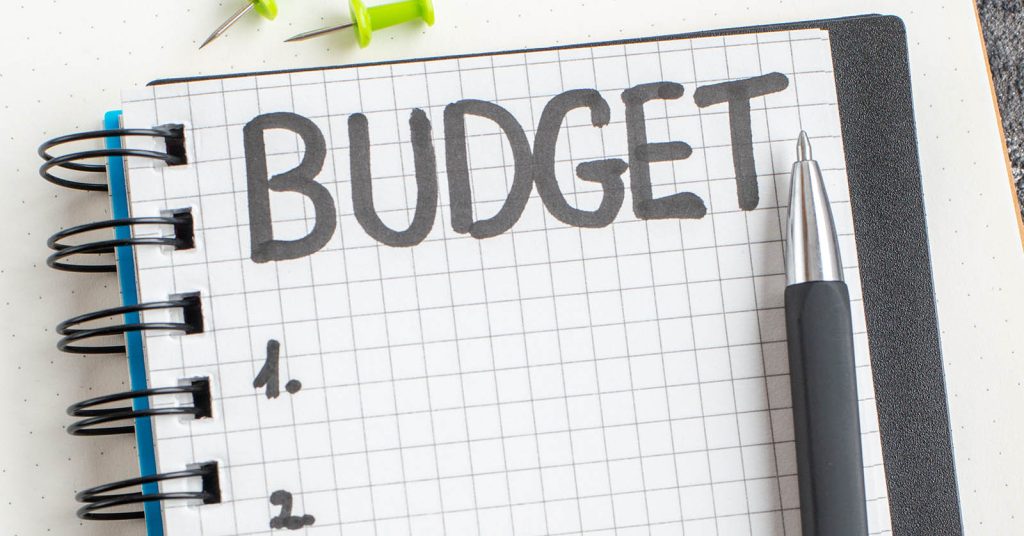Money talks go better when the conversation has a simple agenda, shared numbers, and a short time limit. A standing, once-a-month budget meeting keeps bills current, plans big expenses before they hit, and turns “surprises” into line items. You’ll leave with a clear list of what gets paid, what gets saved, and what gets fixed before next month. Below is a practical playbook you can copy, including a 45-minute agenda, roles, scripts, and a comparison of joint money systems.
Whether you manage money solo, with a partner, or for a household, the goal is the same: make small, low-stress decisions regularly so you avoid big, stressful ones later. You’ll align your spending to your values, reduce fees and waste, and move faster on debt payoff and savings.
Key Takeaways
- Meet monthly on a script — a repeatable, 45-minute agenda beats ad-hoc talks.
- Pick a money system — “One Pot” vs. “Yours/Mine/Ours” drives how you decide.
- Track three numbers — cash flow, emergency fund, and debt payoff pace.
- Automate the boring stuff — subscriptions, bills, and transfers need audits.
Your 45-Minute Monthly Budget Meeting (Step-by-Step)
When: Same day/time each month (e.g., first Sunday evening). Consistency matters more than the specific calendar slot. Keep it to 45 minutes to avoid fatigue and decision drift. If you co-manage money, treat it like a brief, business-style stand-up: focused, factual, and kind.
Prep (5 minutes): Open your budget sheet or app and gather bank/credit statements. If you’re starting from scratch, use a basic, category-based worksheet from a trusted source and keep categories short at first (housing, utilities, food, transport, debt, savings, “fun”). The Consumer Financial Protection Bureau and Consumer.gov both publish simple budgeting tools suitable for beginners.
Agenda (35 minutes):
- 1) Wins & lessons (3 min): One quick win from last month (e.g., “groceries under plan”). One lesson (e.g., “we forgot the car registration”). This sets a constructive tone.
- 2) Cash flow snapshot (7 min): Confirm last month’s total income, fixed bills, variable spend, and savings transfers. If new to this, a simple “money in vs. money out” view is enough.
- 3) Check core safeguards (10 min):
- Emergency fund status (target months of essential expenses; store in an insured account).
- Bill autopays still correct? Trim or cancel unused subscriptions and “free trials.” The FTC stresses clear cancellation pathways and warns about negative-option billing; use this moment monthly to verify you can cancel easily.
- Debt health — are you paying at least the minimums and focusing extra dollars on the chosen method (e.g., avalanche or snowball)? Define Utilization = balances ÷ credit limits; keeping this low supports credit health.
- 4) Optimize income & taxes (5 min): Use the IRS Tax Withholding Estimator a few times per year (or after life changes) so your take-home aligns with your tax picture — not too much, not too little.
- 5) Upcoming calendar (5–7 min): Note irregulars in the next 30–90 days (insurance premiums, travel, school costs, holidays). During open enrollment periods for health coverage, compare plans and contributions; Marketplace dates change by year, so check current Healthcare.gov guidance.
- 6) Assign next-month dollars (5–8 min): Adjust categories and schedule transfers (savings, debt extra payments). If you have federal student loans, enabling auto pay can reduce your interest rate by 0.25% with many servicers — confirm with yours.
Close (5 minutes): Capture three action items, an owner, and a due date (e.g., “Cancel trial — Alex — Friday”). End on appreciation: “Thanks for doing this — we’re getting clearer each month.”
Pick Your System: One Pot vs. Yours/Mine/Ours
Before you argue categories, decide how money flows. Your “system” is the operating model for income, bills, spending money, and savings. The right model reduces friction because it sets expectations in advance. Two models cover most families and couples: One Pot (fully joint) and Yours/Mine/Ours (hybrid).
One Pot puts all income into a single joint account. All bills and shared goals pay from here. Each partner can also get equal personal-spend allowances routed to separate debit accounts. This model is simple, maximizes transparency, and makes shared goals front-and-center. The tradeoff is less personal autonomy and the need for strong communication norms. It works best when incomes are similar, values are closely aligned, and you want maximum simplicity.
Yours/Mine/Ours routes a percentage (or fixed amounts) of each paycheck to a joint “Ours” account for shared bills and goals. Each partner keeps a “Yours” account for personal spending. This protects autonomy, reduces small-purchase friction, and can ease transitions when incomes differ or when blending finances later. The tradeoff is more moving parts and the need to calibrate “fair share” percentages and personal limits. It works well when partners value independence and when incomes or existing obligations differ.
| Method | Best For | Strengths | Watch-outs |
|---|---|---|---|
| One Pot (fully joint) | Aligned goals, similar incomes | Simplest flow; easy to automate; unified visibility | Less autonomy; requires strong trust & comms |
| Yours/Mine/Ours (hybrid) | Different incomes or obligations | Autonomy; fewer small conflicts; scalable | More accounts; must revisit split % as life changes |
How to choose: Start with Yours/Mine/Ours if you’re merging finances, then trial One Pot later if desired. Revisit your system annually or after life events (job change, move, baby). Whichever you pick, keep a short, written “money policy” (e.g., purchases over $X need a heads-up; we review subscriptions monthly; we each get $Y discretionary money that’s judgment-free).
What to Track Every Month (and Why)
1) Cash flow by category. You don’t need perfect granularity; aim for a few high-impact buckets. The CFPB and Consumer.gov emphasize clarity and realism — start simple and adjust. Track against plan, not perfection.
2) Emergency fund size. A common starting goal is 3–6 months of essential expenses in an insured, liquid account. Consider leaning higher if income is variable. Deposit insurance coverage has limits; know your bank and ownership categories when parking large balances.
3) Debt payoff pace and interest. Choose avalanche (highest APR first) for math-optimal speed, or snowball (smallest balance first) for momentum. Either way, automate minimums and push extra to the current target. Keep credit utilization low to support credit health.
4) Subscriptions & recurring charges. Review monthly. Free trials and negative-option offers can stick; regulators have required clearer cancellation paths and disclosures. Make sure you can cancel online and that cancellations “stick.”
5) Tax withholding fit. Adjust after raises or status changes using the IRS estimator so you avoid both penalties and big refunds that starve monthly cash flow.
6) Benefits & open enrollment items. Health plan premiums, HSA/FSA contributions, and dependent-care costs are major line items. Marketplace dates and rules change; verify current open-enrollment windows each year.
7) Student loans (if applicable). Confirm your repayment plan still fits your income and goals. Many servicers offer a 0.25% interest rate reduction for auto pay; verify on your portal.
Automation: Do the Right Things By Default
Automation shouldn’t hide problems; it should make the right outcome the default. The simplest stack is: paycheck hits → automatic transfers to savings and debt → bills on autopay → discretionary spending from what remains. That ordering (“pay yourself first”) forces progress even in busy months. Use alerts to catch anomalies rather than trying to remember everything.
Automate with guardrails: Schedule transfers the day after payday; keep a small buffer in checking to prevent overdrafts. Re-confirm any autopay after you change cards or banks. Use your meeting to validate that autopays are only for bills you still want, and that you can cancel easily if needed — this is where subscription audits pay off.
Coordinate with your system: In One Pot, most automation lives in the joint account. In Yours/Mine/Ours, run fixed joint expenses via the joint account and keep personal autopays in personal accounts. For savings, automate joint goals (emergency fund, travel, insurance premiums) jointly; keep personal goals (hobbies, gifts) personal.
Annual tune-ups: Re-run the IRS withholding estimator after raises or life events; revisit health benefits during open enrollment; confirm emergency fund targets after major budget changes; and review deposit insurance if balances grow.
Running the Meeting Without Drama
Keep tone neutral and data-first. Use the sheet, not memory. When you discuss a surprise or overspend, ask “What did we learn?” not “Who messed up?” The purpose of the meeting is deciding next month’s plan, not relitigating last month’s purchases.
Use roles. One person screenshare/driver; the other challenges assumptions and captures action items. If solo, write decisions to yourself anyway — future-you is your teammate.
Script sticky moments: When you disagree, zoom out to goals: “Which choice gets us to the goal faster?” If you can’t agree, pilot for one month and review next meeting. For large purchases, use a cooling-off rule (e.g., anything over $300 waits 48 hours and must live in the budget plan first).
Pre-decide fun money. Small, discretionary “allowances” reduce conflict; in joint systems, equal dollar amounts are simpler than equal percentages unless incomes differ considerably. In hybrid systems, allowances live in personal accounts by design.
Keep records light. Save a PDF of your final budget plan and task list each month. Over time this creates a useful log for tax prep, insurance questions, and progress tracking.
Common Pitfalls (and Quick Fixes)
Too many categories. Beginners often fragment the budget so much it becomes unmanageable. Start broad; split later if needed. Use official worksheets as a sanity check for category scope.
Ignoring seasonal and annual costs. Build sinking funds (small monthly amounts) for insurance premiums, car maintenance, holidays, and travel. When enrollment windows open for health coverage, compare options — premiums, deductibles, and HSA/FSA rules change.
Letting subscriptions multiply. Add a monthly “subscription audit” line to your agenda. Confirm you can cancel online and that charges stop after cancellation; regulatory actions highlight recurring billing risks for consumers.
Parking too much cash in one place. If your emergency fund grows large, review deposit insurance limits across banks and ownership categories. Spread balances if needed.
High credit utilization. Plan extra payments mid-cycle to lower reported balances before the statement date. Keep utilization low across cards to support credit standing.
Not adjusting withholding. Big refunds or tax bills are signals to rerun the IRS estimator. Aligning withholding with your situation improves monthly cash flow and avoids surprises.
Forgetting student-loan optimizations. If loans apply, check for auto-pay interest reductions and ensure your plan is still the right fit after income changes.
Frequently Asked Questions (FAQs)
How long should a monthly budget meeting take?
Aim for 45 minutes with a tight agenda: quick review of last month, safeguards (emergency fund, subscriptions, debt minimums), calendar look-ahead, and next-month allocations. If you run long, move debates to a separate “decision list” and pilot a one-month test.
Which money system is better: One Pot or Yours/Mine/Ours?
Neither is universally better; choose based on values and logistics. One Pot is simpler and maximizes joint progress; Yours/Mine/Ours preserves autonomy and scales when incomes differ. Document your policy (what’s joint vs. personal, approval thresholds) and revisit annually.
What categories should beginners start with?
Use broad buckets that mirror official budgeting sheets: housing, utilities, food, transportation, insurance/health, debt, savings, personal/fun, and “irregulars.” Expand only when a bucket consistently needs more detail. Trusted worksheets from Consumer.gov and the CFPB are good models.
How often should we adjust tax withholding?
Use the IRS Tax Withholding Estimator after major life changes (income shifts, marriage, dependents) or when you see big refunds/bills. Proper withholding smooths monthly cash flow and reduces surprises at filing.
Do subscriptions belong on autopay?
Autopay is convenient but should be paired with a monthly audit. Regulators emphasize clear cancellation paths and consumer control over recurring charges; make cancellations testable and keep a running list of trials to review at the meeting.
Sources
- Consumer.gov — Making a budget (beginner budgeting steps & worksheets)
- CFPB — Consumer tools (budgeting resources and worksheets)
- IRS — Tax Withholding Estimator (check and adjust withholding)
- FTC — Enforcement on deceptive “free trial”/subscription practices (recurring billing cautions)
- Experian — What is credit utilization (definition and impact)
- Healthcare.gov — Open Enrollment (timelines & plan changes; verify current year dates)
- FDIC — Deposit Insurance (coverage limits by bank and ownership category)
- Federal Student Aid (Aidvantage) — Auto Pay interest reduction (0.25% for many servicers)









